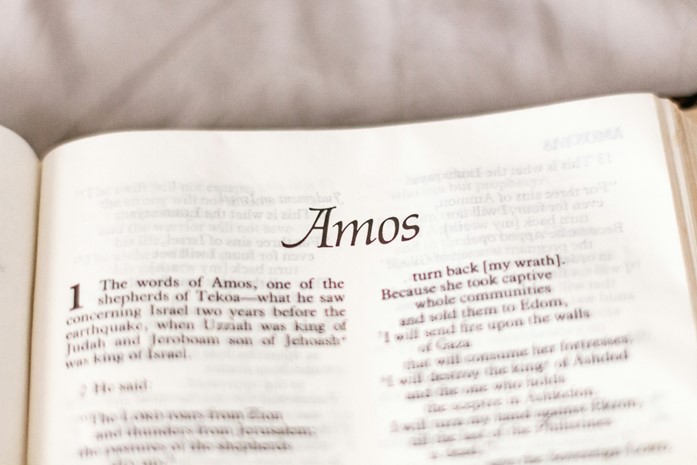In our bid to preach through the Scriptures, this Sunday we begin our preaching series on Amos. For most of us, when we think about our favorite parts of Scripture, the book of Amos doesn’t feature. The themes are uncomfortable and the language is unfamiliar. But the truth is, we need the whole counsel of God if we are to mature as God’s people.
My aim is that this perspective functions as a supplement to the preaching series, helping us to navigate the book. In what follows, we will consider the messenger (Amos), the map (book structure) and the message (key themes) of the Book of Amos.
i. The Messenger
Amos, a shepherd from Tekoa (1:1), in the Southern Kingdom (Judah), was called to be a prophet. Before Amos there had been preaching prophets, like Nathan and Elijah, but Amos is likely the first writing prophet in the OT.
His job was difficult to say the least. First, his message was one of imminent judgement.[1] Second, he came from the south and was asked to preach to the north (Israel) – they hated each other! Third, his ministry took place around 760-755 BC at the height of political stability and economic prosperity. This made Israel spiritually complacent, making it even harder for the lowly shepherd to get his message across. What an unenviable task!
ii. The Map
So how is the book structured?
The book begins by introducing the prophet and the historical context (1:1) and proceeds with a summary oracle emphasising God’s sovereign power over all.[2] Yahweh isn’t just a local deity of a part of Israel – he is Sovereign over all nations. As such, he rightfully judges the nations (1:2-2:3). He rules not only over humans but over all of creation (4:13, 5:8–9).
The book concludes with the hope of final and ultimate restoration (9:11-15).
The book’s main body (1:3-9:10) is about judgment. This is framed in a chiastic structure[3] with its central focus on Israel’s Call to repent (5:1-17).
A. 1:3-2:16 Israel’s Neighbors’ and Israel’s Judgment (“For three transgressions… and for four”)
B. 3:1-4:5 Israel’s Guilt and Punishment (“Hear this word”)
C. 4:6-13 Israel’s Unrepentance (“yet you did not return to me”)
D. 5:1-17 Israel’s Call (“Seek the LORD and Live”)
C’. 5:18-6:14 Israel’s Complacency
B’. 7:1-8:14 Israel’s Warning Visions (“This is what the LORD showed me”)
A’. 9:1-10 Israel’s Impending Destruction (“Not one of them shall escape”)
That the call to repentance is made central (5:1-17) serves to highlight that the message of judgment is never meant to be vengeful but restorative. The aim of God’s speech is to lead His people to repent. God’s heart is always that his people would turn back to him. If not, he wouldn’t bother to forewarn them![4]
iii. The Message
What are the key themes of God’s message through Amos?
First, God’s sinful people.
Political stability and prosperity (6:4-6) led them to be “at ease”, to “feel secure” (6:1) and to not fear “disaster” (9:10). All this led to covenantal unfaithfulness expressed in:
Idolatry and Empty Religion. From the outset, the kingdom was built on the worship of the two golden calves, set in Bethel and Dan (1 Kgs 12:29) instead of Jerusalem. This led to tainted worship of Yahweh (8:14) and other idols that Israel made for herself. They offered up religious tokens of “sacrifices”, “offerings”, and “tithes” (4:4-5; 5:21-23) but these were rejected. Ultimately, the distortion to Israel’s religious life led to the corruption of their society.
Injustice and Unrighteousness. Amos’ sharpest indictments of Israel, if not his most frequent were of Israel’s widespread oppression of those “in her midst” (3:9). Israel victimised the “righteous” and the “poor” (2:6; 4:1) by means of taxes (5:11) and slavery (8:6). Just dealings were rejected (6:12) for deceitful dealings (8:5). Crime was rampant (3:10). Profiteering was prioritised over religion (8:5). Material gain was valued over human lives (2:6; 8:6). Israel, in short, didn’t “know how to do right” (3:10).
Stubborn Unrepentance and Stifling of God’s ministers. God sent judgments of various kinds (4:6-13) to exhort repentance but the common refrain is “yet you did not return to me,” (4:8-11). In their unrepentance, they snuffed out Yahweh’s warnings by silencing his prophets (2:12, 7:10-11), claiming that the “land is not able to bear” Amos’ words (7:10).
Second, God’s covenantal love.
Yahweh’s covenantal love didn’t make him blind to Israel’s sin. He isn’t an indulgent grandfather who excuses the wrongdoing of his offspring. In fact, judgment against Israel was much lengthier than judgment against foreign nations (2:6-16). From social injustice (2:6-7) and sexual immorality (2:7) to corruption of Yahweh’s ordained (2:12), Israel was held to a higher standard precisely because of their covenantal status and what God has done for them (2:10). Indeed, Yahweh was neither blind to “the sinful kingdom” (9:8) nor forgetful of “any of their deeds” (7:7).
God uses Amos to echo the blessings and curses of His covenant (Deut 4, 28-32), highlighting consequences that were by no means new to Israel. [5] One of which is that Israel’s covenantal unfaithfulness will lead to Yahweh plucking Israel out from the “land” (Deut 28:63). Picking up on this theme of “land” (used 16 times), Amos repeatedly reiterates that Israel will go into “exile” (mentioned 8 times) “away from his land”.
Amos’ warning corresponds to the “that day” of judgment, where instead of a “day of the Lord” for the good of Israel (5:18), Israel will “flee away naked” (2:16) and will mourn as a result of famine (7:1-2) and drought (8:3-14). Yet the greater famine would be the famine of “the words of the Lord” (8:11-12).
Yet despite all of this, God showed grace to Israel by raising up Amos (7:15), who exhorted them to “Seek good […] that you may live” (5:14) and to pursue “justice” and “righteousness” (5:24). Yahweh even used Amos to intercede for Israel (7:2, 5).
Ultimately, this grace ensures that a remnant would be preserved. At the end of the book (9:11-15), Amos spoke of a “that day” that would become a day of ultimate restoration.[6] Amos affirmed that the city would be “raised”, the breaches “repaired” and its ruins “raised” and “rebuild” (v11). This restoration is guaranteed by the Yahweh’s forceful threefold affirmation, “I will” (9:11, 14, 15). Ultimately, this restoration only comes in Christ.
Other Resources
~ Bible Project’s Overview https://www.youtube.com/watch?v=mGgWaPGpGz4
~ ESV Study Bible – Overview of Amos https://docs.google.com/document/d/1696qTyu4AmXCo9CQo0JHS77rq_m6_1NIMsLXpFJovzc/edit?usp=sharing
[1] This was fulfilled some 30 years later when Assyrian forces led by Tiglath-pileser III kicked the Northern Kingdom out of the land in 722 BC.
[2] An oracle is simply a ‘unit’ of God’s spoken message, declaring warning, judgment, or hope. In other words, there are multiple oracles within each prophetic book.
[3] Chiastic structure mirrors ideas, highlighting the central, most important point.
[4] In other words, Amos’ message isn’t one of judgment without recourse but a call to repentance leading to restoration. Amos was calling them to seek Yahweh (5:4-5) and to seek “good, and not evil” (5:14), expressed in “justice” and “righteousness” (5:24), in hope of ultimate eschatological restoration (9:11-15).
[5] A prophet’s role is to reiterate the covenant requirements of God’s people, stipulated in the Torah (Genesis to Deuteronomy). In this sense, he brings an old message to a new situation.
[6] As is developed more fully in the writing prophets after Amos, “that day” is a double-edged sword.


